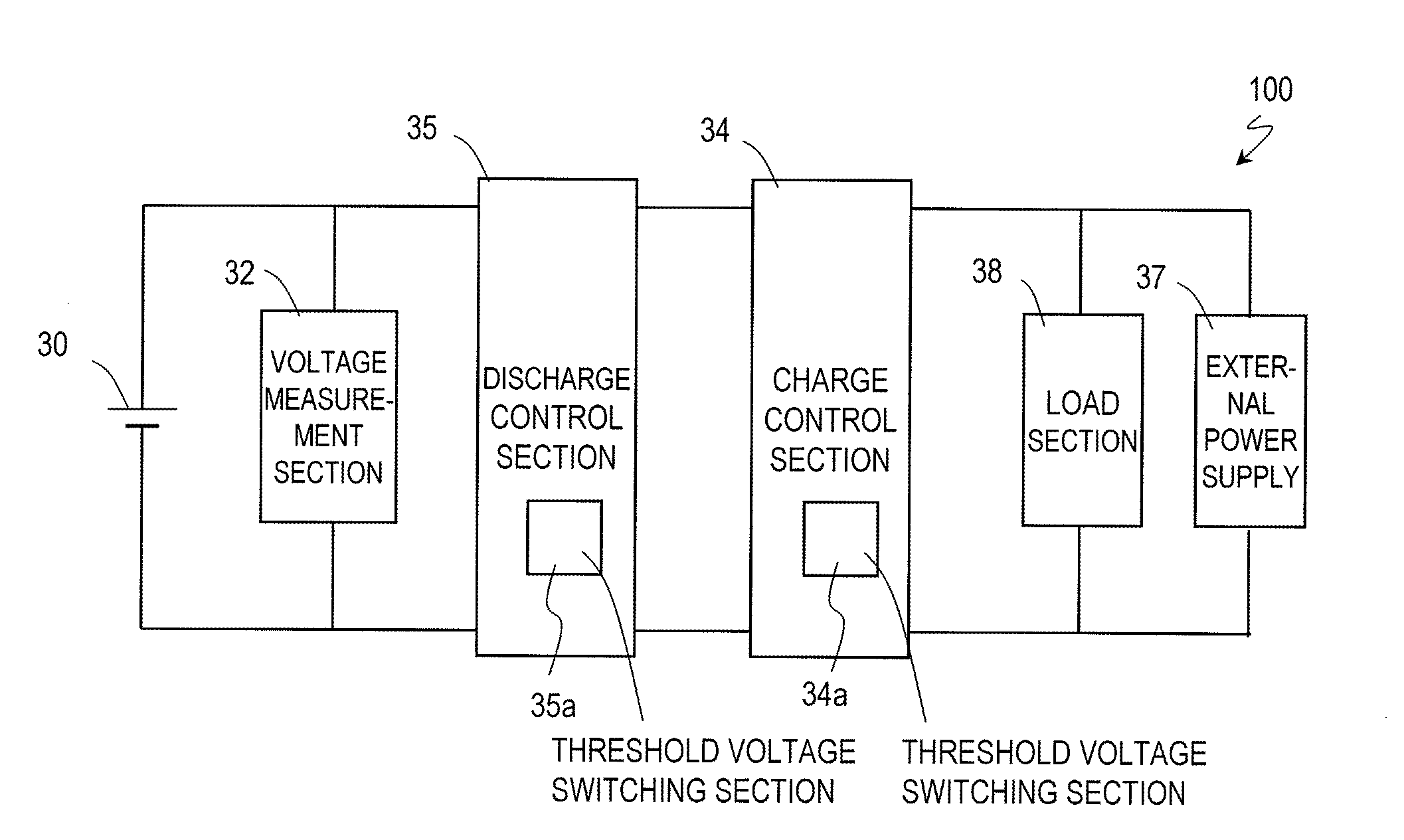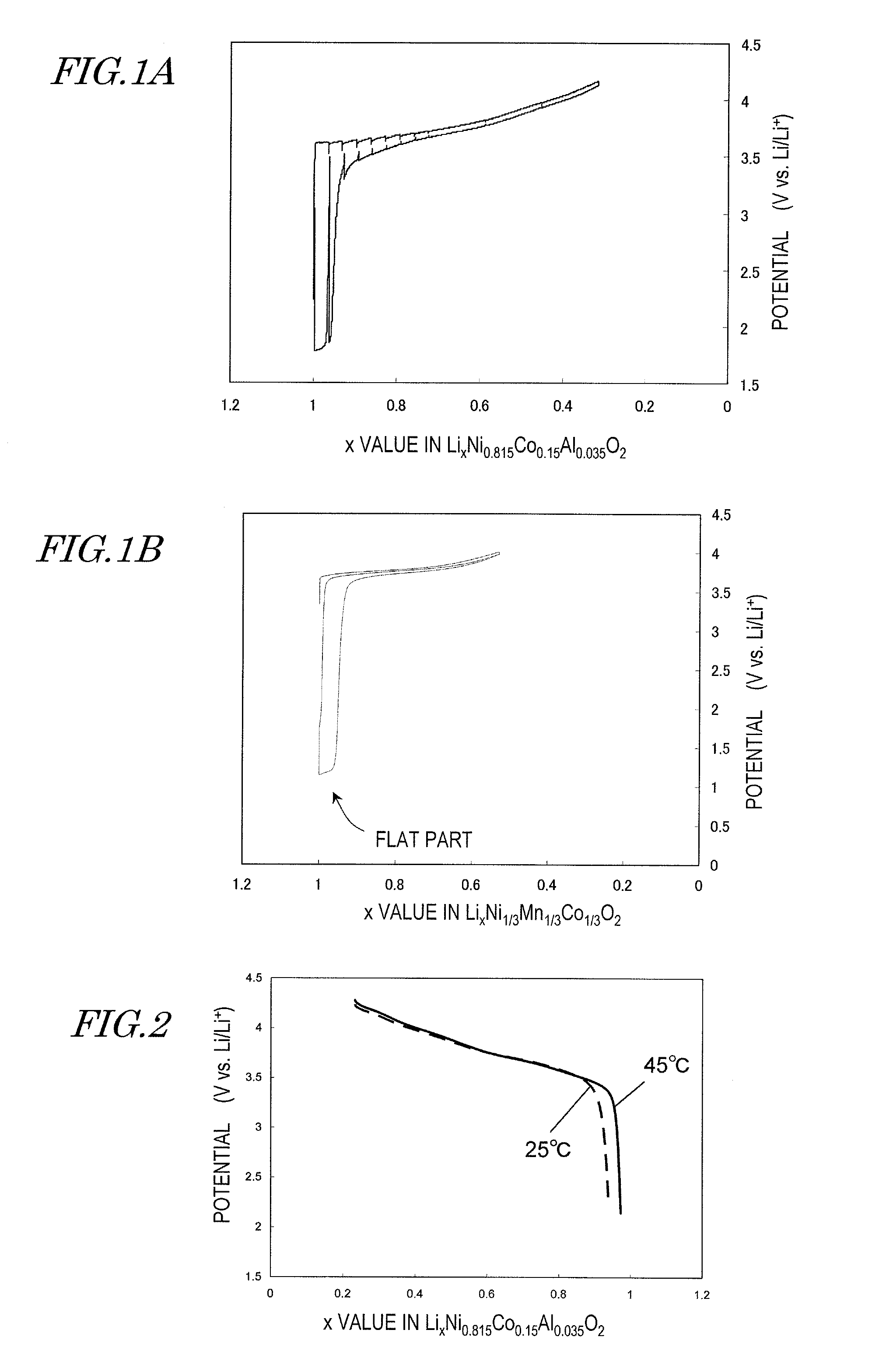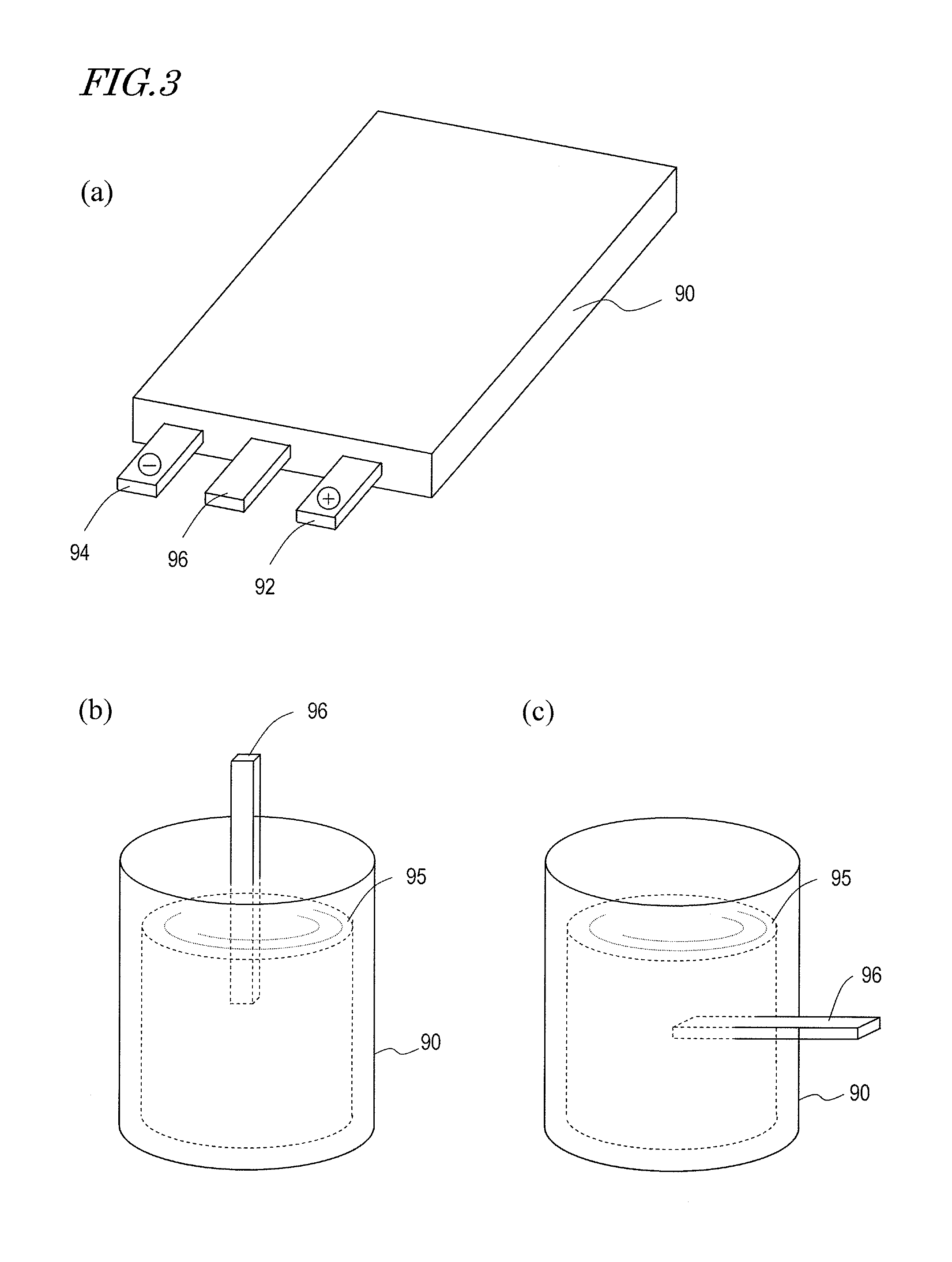Method for charging/discharging positive electrode active material in a lithium secondary battery, charging/discharging system provided with lithium secondary battery and vehicle, electronic device, battery module, battery pack
a positive electrode active material and lithium secondary battery technology, which is applied in the direction of cell components, final product manufacturing, sustainable manufacturing/processing, etc., can solve the problems of low operating potential, low operating potential, and difficulty in further increasing the energy density of lithium secondary batteries, so as to achieve high capacity and improve the ability to charge/discharge irreversibility
- Summary
- Abstract
- Description
- Claims
- Application Information
AI Technical Summary
Benefits of technology
Problems solved by technology
Method used
Image
Examples
embodiment 1
[0051]Hereinafter, Embodiment 1 according to the present invention will be described. This embodiment regards a charge / discharge method for a positive electrode of a lithium secondary battery. The lithium secondary battery includes the positive electrode containing a positive-electrode active material, a negative electrode containing a negative-electrode active material capable of occluding and releasing lithium, a separator located between the positive electrode and the negative electrode, and a nonaqueous electrolyte.
[0052]The positive-electrode active material in the present embodiment is a nickel-type lithium-containing complex oxide capable of occluding and releasing lithium. The nickel-type lithium-containing complex oxide may be an LiNiO2-based material in which a portion of the Ni is substituted by another element selected from the group consisting of Mg, Sc, Y, Mn, Fe, Co, Ni, Cu, Zn, Al, Cr, Pb, Sb, and B.
[0053]In this embodiment, the discharge end potential of the positiv...
example 1
[0096]In order to study the relationship between the discharge end potential of the positive-electrode active material during charge / discharge and the charge / discharge reversibility, the inventors have produced cells for evaluation, which were subjected to evaluation tests. Hereinafter, the methods and results thereof will be described.
[0097](1-1) Production of Positive-Electrode Active Materials A, B and C
[0098]As the positive-electrode active material, three kinds of nickel-type lithium-containing complex oxides of different compositions were produced. Specifically, positive-electrode active material A having a composition expressed as LiNi0.815Co0.15Al0.035O2, positive-electrode active material B having a composition expressed as LiNi0.76Co0.14Al0.10O2, positive-electrode active material C having a composition expressed as LiNi1 / 3Mn1 / 3Co1 / 3O2 were produced.
[0099]A method of producing positive-electrode active material A is described below.
[0100]First, an aqueous solution containi...
embodiment 2
[0167]Hereinafter, Embodiment 2 according to the present invention will be described with reference to the drawings. This embodiment regards a charge / discharge method using a wound-type lithium secondary battery.
[0168]First, a structure of the lithium secondary battery in this embodiment will be described.
[0169]FIG. 5 is a schematic cross-sectional view showing an example of a lithium secondary battery of the present embodiment.
[0170]The lithium secondary battery includes a battery case 1, an electrode group 4 accommodated in the battery case 1, and insulation rings 8 respectively disposed above and below the electrode group 4. The battery case 1 has an upper opening, the opening being sealed with a sealing plate 2.
[0171]The electrode group 4 is constructed so that a positive electrode 5 and a negative electrode 6 are wound a plurality of times in spirals while having a separator 7 therebetween. A positive electrode lead 5a of e.g. aluminum extends from the positive electrode 5, whe...
PUM
 Login to View More
Login to View More Abstract
Description
Claims
Application Information
 Login to View More
Login to View More - R&D
- Intellectual Property
- Life Sciences
- Materials
- Tech Scout
- Unparalleled Data Quality
- Higher Quality Content
- 60% Fewer Hallucinations
Browse by: Latest US Patents, China's latest patents, Technical Efficacy Thesaurus, Application Domain, Technology Topic, Popular Technical Reports.
© 2025 PatSnap. All rights reserved.Legal|Privacy policy|Modern Slavery Act Transparency Statement|Sitemap|About US| Contact US: help@patsnap.com



